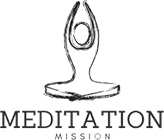Certainly! Here’s the article you requested.
—
**The Transformative Benefits of Meditation and Yoga**
In the whirlwind of modern life, where stress and chaos seem like our unshakeable companions, the ancient practices of meditation and yoga emerge as beacons of tranquility and resilience. The melding of physical postures and mindfulness techniques provides a sanctuary for the mind and body—a refreshing retreat that ushers in peace and empowerment. If you’re curious about the “why” and “how” of these practices, read on. Let’s dive deep into the myriad benefits that meditation and yoga bestow upon our health, clarity, and overall wellness.
Understanding the Basics: How to Meditate and the Essence of Yoga
Meditation, at its core, involves focusing the mind, ushering in a state of awareness and calm that seems elusive in our daily lives. From guided meditation sessions to mindfulness meditation, numerous techniques cater to varying needs and expertise levels. Starting with a daily meditation routine can profoundly change one’s outlook, allowing for deeper introspection and greater emotional balance.
Yoga, meanwhile, is an integrated discipline that combines physical postures, known as asanas, with breathing exercises and meditation. Beginners often start with yoga for flexibility, gradually nurturing their bodies to move with grace and ease. Both practices are often learned together, reinforcing one another in cultivating mindfulness and physical health.
Yoga Poses for Stress Relief and Flexibility
Stress is something we all grapple with, and yoga offers effective solutions. Simple yoga poses for stress relief include Child’s Pose and Legs-Up-the-Wall, both of which gently calm the nervous system and foster relaxation. For those seeking to enhance their flexibility, poses such as the Forward Bend and the lissome Downward Dog can gradually extend and strengthen muscle groups, supporting better posture and reducing injury risk.
Unveiling the Benefits of Yoga and Meditation
The benefits of yoga and meditation extend far beyond physical alignment and a peaceful mind. Studies have highlighted numerous meditation benefits for mental health, including reduced anxiety and depression symptoms and greater emotional regulation. Meditation for anxiety often empowers practitioners by providing coping mechanisms that lead to serene, less reactive states of mind.
On the physical front, regular yoga practices increase flexibility, promote cardiovascular health, enhance pulmonary function, and even spur better digestion. Consistent attendance in yoga and meditation courses invariably results in a host of improved health metrics and a more centered lifestyle.
Guided Meditation Sessions: Your Gateway to Mindfulness
For those unsure of where to begin, guided meditation sessions offer an approachable entry point. These sessions, often led by seasoned practitioners or available through apps, provide structure—gently directing focus and clearing mental clutter. With consistent practice, participants typically observe lessened stress levels, improved concentration, and a greater overall sense of life satisfaction.
Meditation Techniques: Finding What Works for You
There are a plethora of meditation techniques to explore. Some find peace in mindfulness meditation, which encourages focus on the present moment, observing emotions and sensations without judgment. Others might prefer loving-kindness meditation, which involves projecting compassion towards oneself and others. Discovering the right technique often necessitates sampling a few to see which resonates most deeply with individual needs and lifestyles.
Yoga Practice Tips for Beginners
If you’re just getting started on this wellness journey, consider these yoga practice tips:
– Start with simple, foundational poses like Mountain Pose to cultivate balance and strength.
– Invest in a comfortable, durable yoga mat—some of the best yoga mats provide the grip and cushioning necessary for a pleasant practice.
– Consistency is key. Incorporate yoga into your routine gradually, aiming for shorter sessions to build stamina and familiarity.
– Listen to your body. Yoga for beginners should be about exploration and comfort, not pushing beyond gentle resistances.
The Role of Yoga and Meditation in Daily Life
Integrating yoga and meditation into everyday life is about more than transforming your physical health—it’s an investment in well-being. Through daily meditation routines and regular yoga practice, your stress responses can significantly diminish. Imagine a life where road rage is replaced by patience, work stress with focused productivity, and evening worries with restful sleep. That’s the power of these practices.
As the Dalai Lama aptly put it, “The goal is not to be better than the other man, but your previous self.” Whether you seek the serenity of a quiet mind or the vigor of a supple body, yoga and meditation open doors to becoming just that.
In embracing these practices, you don’t just adopt exercise routines; you undertake a journey—a path to inner peace, self-awareness, and a more fulfilling, harmonious existence. So roll out that yoga mat, take a deep, calming breath, and step onto a transformative path that generations before us have cherished and modern science continues to advocate.
Powered by TBS
